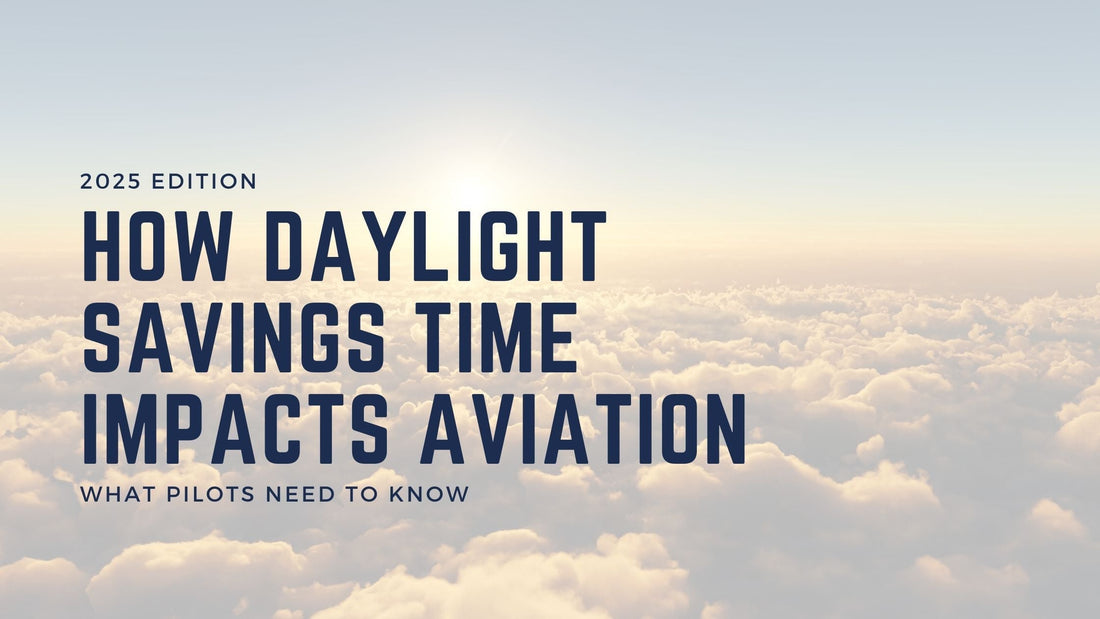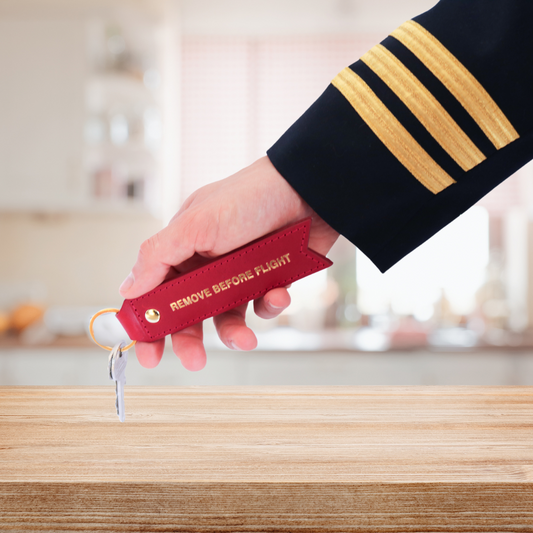British Summer Time and Aviation: What You Need to Know
Every year in the UK, clocks move forward one hour in March and back one hour in October as British Summer Time (BST) begins and ends. BST is a form of daylight saving time, and while the concept is designed to maximize daylight hours and conserve energy, it often catches people off guard. About 40% of countries worldwide use some form of daylight saving time, but the aviation industry operates differently. For pilots, these seasonal changes have little impact on operational timekeeping, thanks to the use of Coordinated Universal Time (UTC).
Even though most people remember to adjust their clocks, daylight saving changes still manage to confuse some—one of the reasons aviation does not observe daylight saving time.
How Daylight Savings Time Affects Flights
Daylight saving time impacts local scheduled flight times, just like it affects television schedules and public transport timetables. If departure and arrival airports switch to DST on different dates, it can alter the apparent duration of a flight, even though the actual flight time remains the same. To maintain accuracy and prevent confusion across time zones, aviation follows one universal time standard:
Aviation Runs on UTC (Coordinated Universal Time)
UTC is the internationally recognised time standard used for flight plans, air traffic control clearances, and meteorological data. Unlike local time zones, UTC remains consistent throughout the year and does not observe daylight savings time. Prior to the 1960s, the aviation world relied on Greenwich Mean Time (GMT), but UTC was introduced as a more precise global standard.
Hang on, why is it not known as CUT?
The answer is it’s a compromise between the English (Coordinated Universal Time) and French phrases (Temps Universel Coordonné)
UTC is often seen written as ‘z’ and referred to by pilots and aviation professionals as ‘zulu’ time.
Where does ‘Z’ come from?
You may have noticed how each time zone is expressed as a certain number of hours "+ UTC" or " -UTC"? (For example, UTC -5 is Eastern Standard Time in the USA.) Well, the letter "z" refers to zero hours (UTC + 0).
And why Zulu?
Since the NATO phonetic alphabet ("Alfa" for A, "Bravo" for B, "Charlie" for C...) word for Z is Zulu, pilots, and aviation professionals will refer to it as "zulu time”, as per This is especially true in aviation, where "Zulu" is the universal standard. This ensures all pilots, regardless of location, are using the same 24-hour clock, thus avoiding confusion when flying between time zones.
Understanding Daylight When Flying
Time is essential in aviation, not only for flight planning but also for ensuring safety. Daylight and speed determine flight duration, estimated arrival times, and fuel calculations. Pilots flying under Visual Flight Rules (VFR) must be especially aware of daylight changes, as many airfields close at or just after sunset.
Sunlight
Sunlight occurs between sunrise and sunset. Sunrise is the exact time when the top part of the sun becomes visible on the horizon, and sunset is when the top part of the sun disappears under the horizon.
Daylight
Daylight starts when the center of the sun is just below the horizon in the east and ends when the center of the sun is just below the horizon in the west.
Twilight
After the sun sets below the horizon at certain times of year, and depending where you are in the world, there might still a bit of daylight left - the same happens in the morning just before the sun peeks over the horizon. These short periods are called twilight and are measured when the centre of the sun is just below the horizon. The time the sun spends in these small (6 degrees on either side, to be precise) varies considerably depending on where you are flying in the world. If you’re fortunate enough to be flying in the tropics, closer to the equator, evening darkness sets in abruptly, which means you’ll get a much shorter period of twilight.
Atmospheric conditions and altitude can also influence daylight duration, which is critical for VFR pilots flying near sunset. The further you are from the equator, the longer twilight lasts. In the tropics, darkness arrives suddenly, leaving little transition between daylight and night.
How Aileron Helps Pilots Stay on Track
For pilots, staying on top of time zones and daylight changes is crucial for planning and logging flight hours. Aileron’s pilot logbooks and digital logbook printing services help pilots maintain accurate records, regardless of time shifts or seasonal changes. Whether you use a digital or printed logbook, having a reliable system to track flight hours ensures compliance with regulations and smooth career progression.
If you need a high-quality pilot logbook that aligns with industry standards, explore Aileron’s collection of customizable logbooks designed for both professional and student pilots.
Final Thoughts
While British Summer Time affects the daily lives of millions, pilots and aviation professionals continue to rely on UTC/Zulu Time for accuracy and consistency. Whether you're adjusting your alarm for daylight savings or planning a long-haul flight, understanding how time zones and daylight impact aviation is crucial.
For pilots flying under VFR, keeping track of daylight hours is just as important as knowing flight routes and fuel calculations. Time management in aviation is more than just setting a clock—it’s about precision, safety, and coordination across the globe.
FAQS: Daylight Saving and Aviation
1. Who is Aileron and what do you do?
Aileron is a pilot-founded brand creating aviation-inspired products for pilots and aviation enthusiasts. We specialise in personalised pilot logbooks, custom digital printing, and unique pilot gifts designed to celebrate the craft and lifestyle of flight.
2. Why does Aileron write about aviation topics like daylight savings time?
As a team of active line-flying pilots, aviation is at the heart of everything we do. We share insights into subjects that shape flying life, from timekeeping and flight operations to design and culture, because our products and stories are inspired by real flight experience.
3. How does Aileron’s experience as pilots influence your products?
Our team’s background in commercial aviation directly shapes what we make. Each Aileron product, from our personalised logbooks to aviation gifts, is designed with a pilot’s perspective in mind.





